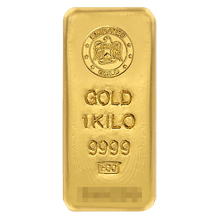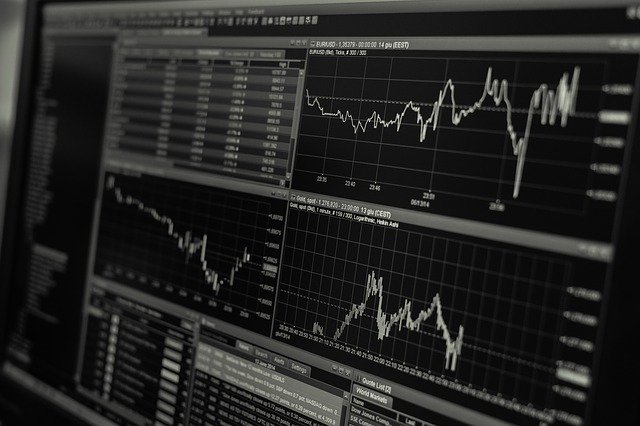
“Which of the following is better for trading gold? The physical metal, gold ETFs or Gold CFDs?”
 Bullion.Directory’s Ask Ally Service
Bullion.Directory’s Ask Ally Service
By Alison Macdonald
Commercial Editor at Bullion.Directory
Brian in London wrote asking for recommendations as to the best gold trading vehicle, with his suggested options being trading physical metals, Exchange-Traded Funds (ETFs) and Contracts for Difference (CFDs).
I don’t know his trading experience, or history nor his motivation – but I’m going to assume profits are central as after all who trades wanting to make a loss?
With this in mind I’m going to look at gold trading in general, then detail three principal gold trading methods – and finally compare each across the 3 factors of liquidity, ease of trading and trading costs.
Introduction to Gold Trading:
I understand that not everyone wants to buy gold as a long term investment.
Yes, gold has captivated humanity for centuries, revered for its beauty and rarity.
And yes, historically, gold has played roles ranging from a medium of exchange in commerce to a symbol of wealth and power, it’s glittering allure being an unbeatable ability to preserve value over time.
But, as a trading vehicle, for making short-term gains, gold has evolved to be more than just physical bars or coins; it’s now traded in various forms, adapting to the needs of modern investors.
The three primary methods of trading gold I will be looking at are:
- Physical Gold: This traditional form involves buying and holding actual gold items, like coins or bars. It’s tangible, with a direct relationship between the investor and their investment. This is Bullion.Directory’s bread and butter, our modus operandi and my personal favorite.
- Gold ETFs (Exchange-Traded Funds): These financial instruments track the price of gold and are traded on stock exchanges. They offer a more accessible way to invest in gold without dealing with physical storage.
- Gold CFDs (Contract for Difference): CFDs are derivatives that allow traders to speculate on gold price movements without owning the actual metal. They provide high flexibility and potential for leveraging investments, but come with increased risks.
I’m going to ignore “the miners” today as despite their being a useful way to trade on the ups and downs of the gold market, mining stocks contain additional risk beyond those affecting precious metals – and are an article in themselves. I’m also going to ignore futures, because I’ll be covering these in a future detailed article.
So with that out of the way, lets look at the three principal forms of gold trading in more depth…
1. Trading Physical Gold
 Trading physical gold means buying and holding actual gold products like coins and bars.
Trading physical gold means buying and holding actual gold products like coins and bars.
This form of trading is tangible; investors will physically own and store the gold, typically at a secure storage facility.
Companies such as BullionVault have set up to make this trading and storage as seamless as buying and selling stocks, so many of the disadvantages I’m going to list don’t necessarily apply.
Advantages of Trading Physical Gold
- Tangible Asset: Physical gold is a tangible asset, offering a sense of security and permanence. It’s not just a number on a screen but a real item you can hold.
- No Counterparty Risk: When you own physical gold, there’s no reliance on another party’s ability to fulfill a contract or obligation.
- Inflation Hedge: Historically, gold has been a hedge against inflation. As the value of currency decreases, gold often retains or increases in value. Whilst this has less of an impact on short-term trading, it’s something to consider.
- Simple and Transparent: Trading physical gold is as straightforward as it gets. You buy gold items at market price, plus a premium, and sell them similarly.
- Storage and Insurance Costs: Safeguarding physical gold requires secure storage and insurance, which can incur significant costs.
- Liquidity: Converting physical gold into cash quickly can be challenging, depending on market conditions and the form of gold owned.
- Market Price Premiums: The buying and selling prices (spread) of physical gold include dealer premiums and may not always align closely with spot gold prices.
- Authentication and Purity Concerns: Ensuring the authenticity and purity of physical gold can be a challenge, especially for inexperienced investors.
- Ease of Trading: Gold ETFs can be bought and sold like stocks through a brokerage account, offering ease and convenience.
- No Physical Storage: Since there’s no physical gold to store, investors avoid the costs and hassles of storage and insurance.
- Liquidity: Gold ETFs are highly liquid, allowing investors to quickly convert their holdings into cash.
- Exposure to Gold Prices: Investors can gain exposure to the movements of gold prices without dealing with physical gold.
- Counterparty Risk: Unlike physical gold, there is counterparty risk involved, as you’re relying on the management of the ETF provider. This is lessened when the ETFs are backed with physical gold, but this is not always the case.
- Potential Tracking Errors: Sometimes, the ETF might not perfectly track the price of gold due to fees or other factors.
- No Direct Ownership of Gold: Investors in gold ETFs don’t have a claim to physical gold, which can be a downside for those who prefer tangible assets.
- Annual Fees: Gold ETFs typically charge annual management fees, and trade fees, which will have an impact on investment returns.
- Leverage: One of the key features of Gold CFDs is the ability to use leverage, which means you can control a large position with a relatively small amount of capital. However, while leverage can magnify profits, it also increases the risk of losses.
- Gold’s Volatility: Gold is known for its price volatility. This characteristic can be advantageous for CFD traders, as it provides opportunities to profit from price fluctuations in both bull and bear markets.
- Short Selling: Gold CFDs enable short selling, allowing traders to profit from falling gold prices, which is not possible with traditional physical gold investment. If you short gold though, you become my enemy. Just saying.
- No Physical Handling: There’s no need to worry about the storage, security, or insurance of physical gold, making it a hassle-free way to gain exposure to its amplified price movements.
- High Risk from Leverage: While leverage can increase gains, it also significantly raises the risk of losses. You can end up losing far more than what you staked.
- Market Volatility: Gold’s price volatility can lead to rapid changes in CFD positions, requiring constant monitoring and risk management. This can be stressful.
- Complexity: Gold CFDs can be complex and may not be suitable for inexperienced traders.
- Overnight Financing Costs: Holding CFD positions open overnight can incur additional costs.
- Liquidity: Moderate; depends on market conditions and form of gold.
- Ease of Trading: Less convenient; requires physical handling and verification.
- Costs: Includes premiums, storage, insurance, and potential selling costs.
- Key Factors: Tangibility, no counterparty risk, long-term store of value.
- Liquidity: High; traded like stocks on exchanges.
- Ease of Trading: High; can be bought/sold via brokerage accounts.
- Costs: Management fees, potential brokerage fees.
- Key Factors: Easy to trade, no physical storage, tracks gold price, subject to counterparty risk.
- Liquidity: High; traded on various platforms.
- Ease of Trading: High; online platforms offer quick trading.
- Costs: Spread costs, overnight financing (for long-term positions), potential leverage costs.
- Key Factors: High flexibility, leverage available, no physical gold, high risk due to leverage and market volatility.
Challenges in Trading Physical Gold
So, while trading physical gold offers the assurance of owning a tangible asset and can serve as a hedge against inflation, it can also come with challenges like storage costs, liquidity concerns, and the need for careful authentication.
See Gold Spot Price Chart
See Physical Gold Market Average Prices
2. Gold ETFs (Exchange-Traded Funds)
 Gold ETFs are financial instruments that track the price of gold and are traded on stock exchanges, similar to stocks.
Gold ETFs are financial instruments that track the price of gold and are traded on stock exchanges, similar to stocks.
Each ETF share represents a certain amount of gold, often a fraction of an ounce. Investors in gold ETFs don’t own physical gold; instead, they own a share of a pool of gold managed by the ETF provider.
Some ETFs are fully backed by physical gold, some partially and some have zero physical gold to back up investor’s funds.
Benefits of Trading Gold ETFs
Negatives When Trading Gold ETFs
3. Gold CFDs (Contract for Difference)
 Gold CFDs are a type of derivative trading that allows investors to speculate on gold price movements without owning the actual metal.
Gold CFDs are a type of derivative trading that allows investors to speculate on gold price movements without owning the actual metal.
Traders can take positions on both the rise and fall of gold prices, providing opportunities for profit in various market conditions and take advantage of gold’s short term volatility.
(See Gold CFD Chart – XAU/USD)
Advantages of Trading Gold CFDs
Gold CFDs offer a high degree of flexibility and potential for profit in both rising and falling markets, but it’s essential to be aware of the risks, particularly those associated with leverage and market volatility…
Disadvantages With Gold CFDs
Gold CFDs offer a modern, flexible approach to gold trading but come with high risks as a counter to the high rewards, particularly due to leverage and market volatility. They require a thorough understanding of the market and careful risk management.
Comparing the Three Gold Trading Vehicles
Here is a direct comparison of each trading vehicle, looking at liquidity, ease of trading, trading costs and other important factors:
Physical Gold
Gold ETFs
Gold CFDs
Each method has its unique advantages and challenges, making them suitable for different types of investors based on their goals, risk tolerance, and investment strategy.
Physical gold offers tangibility and stability, ETFs provide ease and liquidity, while CFDs offer high flexibility and the potential for leveraged trades.
Maximizing Profit Potential: Focus on CFDs

The trading of Gold CFDs (Contracts for Difference) is an attractive yet complex investment method with inherent risks that need careful consideration.
Unlike physical gold or ETFs, CFDs allow investors to speculate on gold price movements without owning the actual metal. This flexibility, however, comes with significant risks, primarily due to the use of leverage.
Leverage in CFD trading means you can control a large position with a relatively small amount of capital.
While this can amplify profit, it also magnifies potential losses, sometimes exceeding the initial investment. This high degree of risk makes Gold CFDs more suitable for experienced traders who can navigate the volatile gold market effectively.
Another risk or advantage depending on how you look at it, in Gold CFD trading is the market volatility itself.
Gold prices can fluctuate widely due to various factors like geopolitical events, economic data, and currency fluctuations. These rapid price changes can result in quick gains or losses, demanding constant market monitoring and quick decision-making.
To mitigate these risks, responsible trading practices are essential.
This includes using risk management tools like stop-loss orders to limit potential losses, diversifying investments rather than concentrating solely on gold CFDs, and continuous market analysis to make informed decisions.
It’s also crucial to trade with only the capital you can afford to lose, avoiding the temptation to over-leverage.
Self-education on the nuances of the gold market and CFD trading overall is also vital. Many of the best brokers offer educational resources, demo accounts, and professional advice, which can be invaluable, especially for those new to CFD trading.
So, while Gold CFD trading offers the potential for high returns, it does come with significant risks that require a strategic approach and a thorough understanding of market dynamics.
Adopting responsible trading practices and continual learning are key to navigating the challenges of Gold CFD trading.
Conclusion: Which is Better For Trading?
When it comes to trading gold, investors have multiple avenues: physical gold for tangibility and stability, gold ETFs for ease and liquidity, and gold CFDs for high flexibility and potential leveraging opportunities.
While each method has its unique advantages, gold CFDs stand out for certain investors due to their ability to capitalize on market movements, both up and down, without the need for physical storage.
However, and I cannot stress this enough, the leveraged nature of CFDs, along with gold’s inherent volatility, makes them more suitable for experienced investors who understand the risks and have robust risk management strategies in place.
For those who can navigate its complexities and risks, gold CFD trading offers potentially the most rewarding investment option of the three.
Alison Macdonald

Ask Ally, is your direct line to gold investment wisdom. Alison “Ally” Macdonald, with her extensive experience and sharp tongue, cuts through clutter to offer honest, insider takes on your gold investment questions.
Need insights or industry secrets? Ally’s ready to deliver, combining professional expertise with a smattering of Glasgow patter. Get ready for straightforward, expert guidance from a one-time gold shill turned good guy. Ask Ally Today












 Material provided on the Bullion.Directory website is strictly for informational purposes only. The content is developed from sources believed to be providing accurate information. No information on this website is intended as investment, tax or legal advice and must not be relied upon as such. Please consult legal or tax professionals for specific information regarding your individual situation. Precious metals carry risk and investors requiring advice should always consult a properly qualified advisor. Bullion.Directory, it's staff or affiliates do not accept any liability for loss, damages, or loss of profit resulting from readers investment decisions.
Material provided on the Bullion.Directory website is strictly for informational purposes only. The content is developed from sources believed to be providing accurate information. No information on this website is intended as investment, tax or legal advice and must not be relied upon as such. Please consult legal or tax professionals for specific information regarding your individual situation. Precious metals carry risk and investors requiring advice should always consult a properly qualified advisor. Bullion.Directory, it's staff or affiliates do not accept any liability for loss, damages, or loss of profit resulting from readers investment decisions.

Leave a Reply